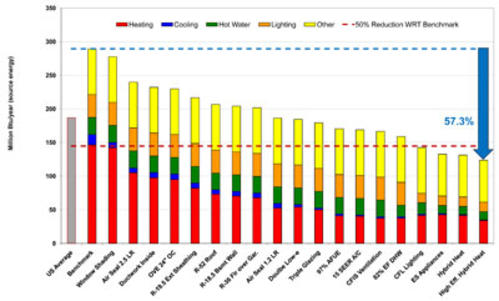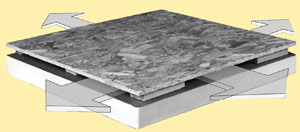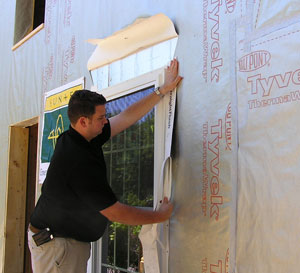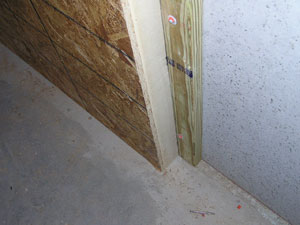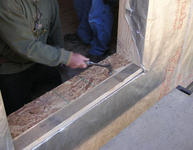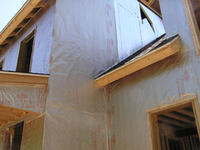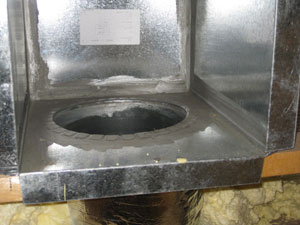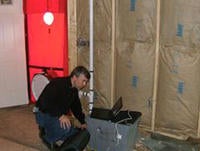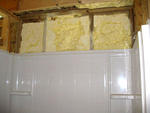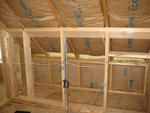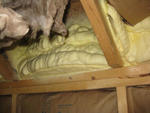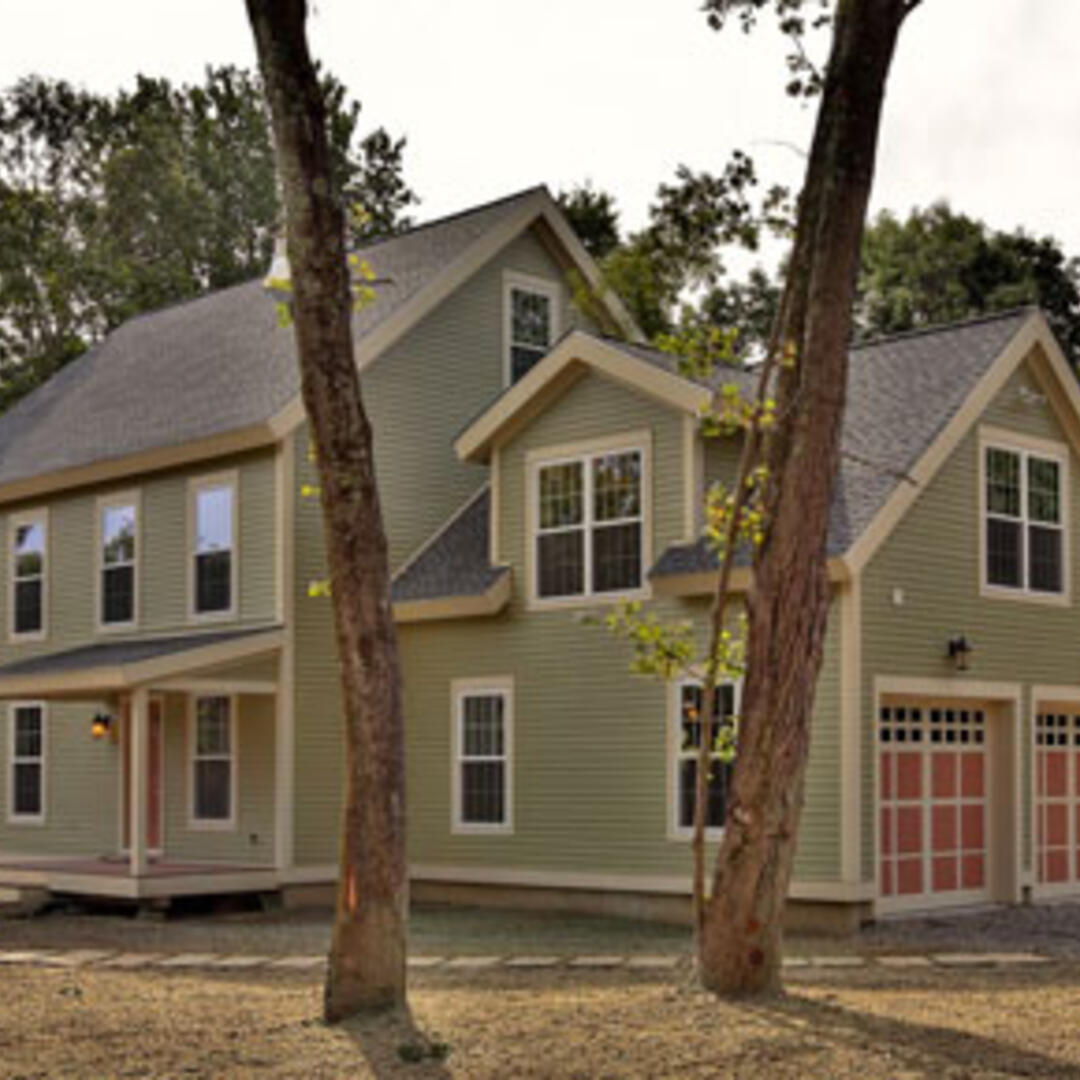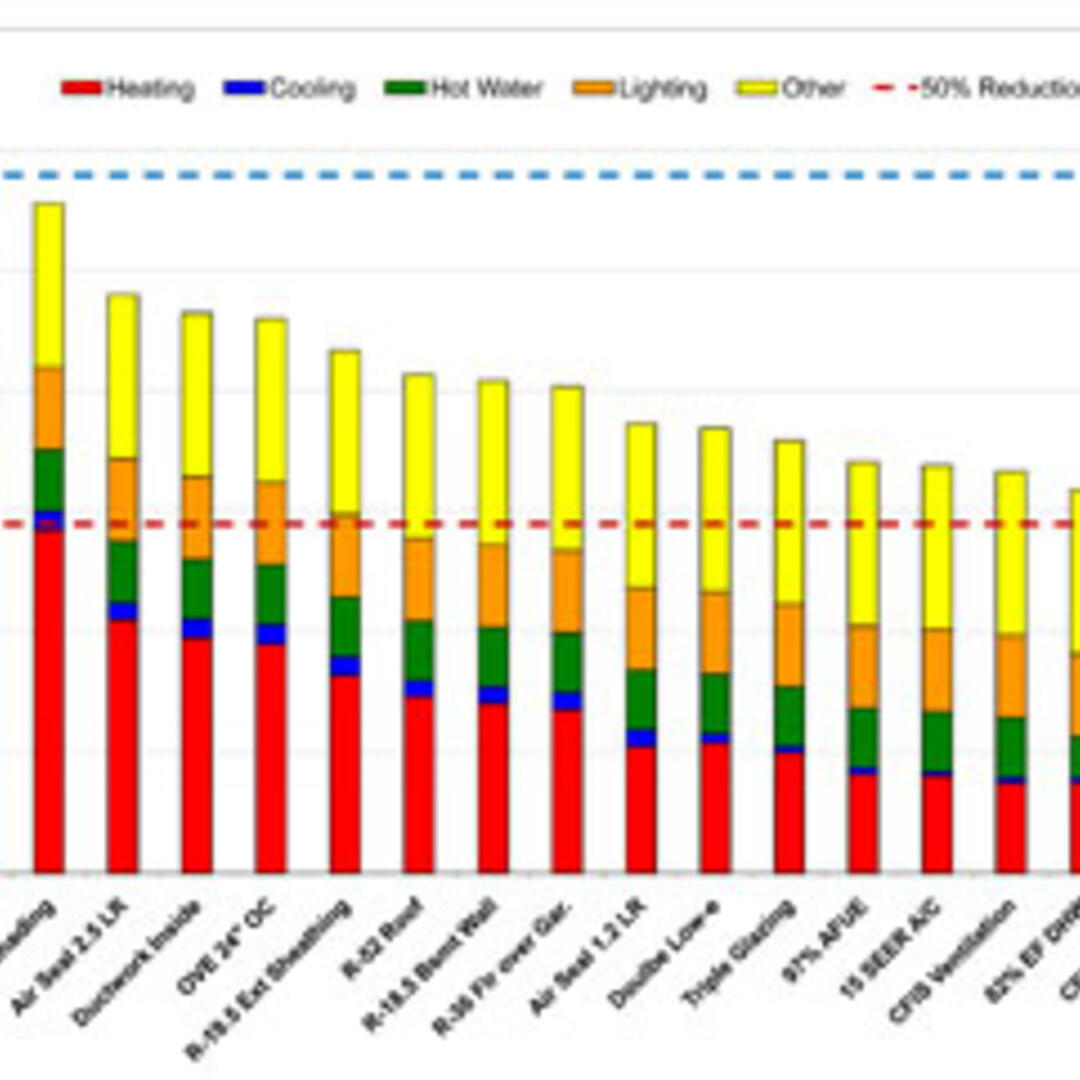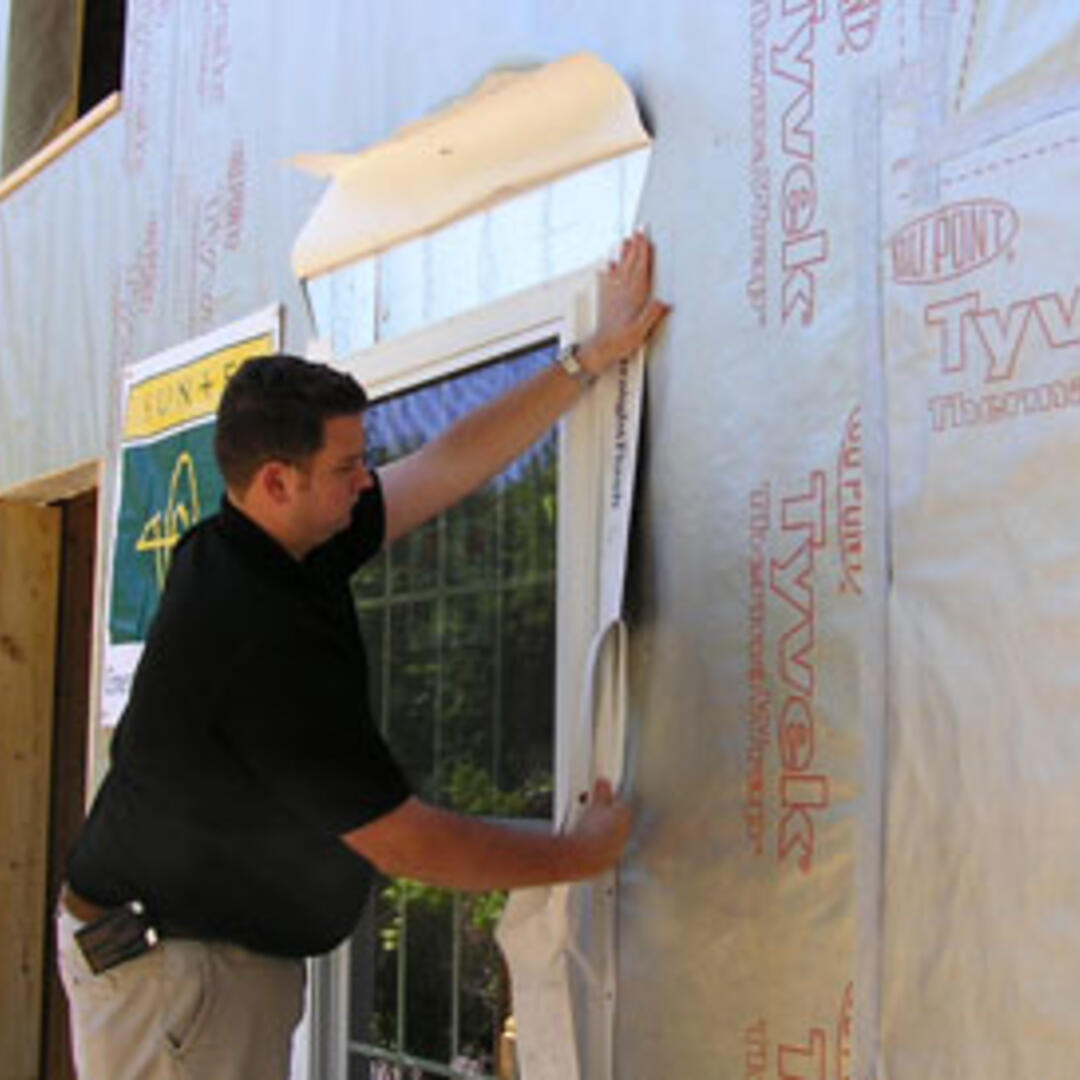Photograph courtesy of Jim Pepitone
Project Team: Ark Ventures, LLC, Building Science Corporation
Location: Oakdale, Connecticut
Description: 2,696 ft2 3 bedroom plus office, 21/2 bath, four story single family home
Completion Date: October 2009
Estimated Annual Energy Savings: 57% energy use reduction as compared to the Building America benchmark; estimated $3,550 per year saviings
Project Website: www.thehomesatgreenbrier.com
Overview
This is a first foray into Building America-level performance for the builder, Jim Pepitone and his company, Ark Ventures, LLC. Building Science Corporation (BSC) supported Ark Ventures on the design and construction of the Greenbrier prototype, the model home for a 14 unit subdivision in which the builder intends to demonstrate his concept of “attainable sustainable.”
With the model home, the builder set out to push the envelope of what he could accomplish within a budget that the expected sale price would support. To extend this budget, the builder leveraged donated product and media exposure extensively. The home has a high performance thermal enclosure with thick exterior insulation on both the roof and the walls. The heating system is a dual fuel, heat-pump-plus-furnace system. Whole house ventilation is provided by a central fan-integrated supply (CFIS) system. Water heating is provided by a high efficiency on-demand water heater installed in a closet of the main floor bathroom. The home is equipped with ENERGY STAR® lighting and appliances.
Installation of thick exterior sheathing proved very challenging for the builder’s subcontractors. A critical seal approach as well as attention to detail during the framing stage resulted in very good air tightness.
Design
This Building America prototype home is the model home for the Homes at Greenbrier in Oakdale, Connecticut. The builder intends the entire subdivision to demonstrate his concept of “attainable sustainable” whereby he can offer high performance homes at mid-market prices.
The model home contains 2,700 ft2 of finished space in a relatively compact footprint. The design achieves the generous floor area by fully occupying the space under 12:12 pitch roofs. An open staircase continues from this third floor space to the conditioned basement. The builder includes features in his homes that he believes will attract mid-market buyers. These features include an open ground floor plan, central AC, fiber cement siding, hardwood-laminate flooring, and a semi-finished basement and third floor ready to accommodate expansion.
BSC provided product specification and details to guide the implementation of new techniques, evaluated products the builder proposed, and helped to communicate performance objectives to subcontractors. Among the products and techniques that the builder employed for the first time in this project are: 1) a Cool-Vent™ insulated roof panel with a vented nail base, 2) thick exterior insulation, 3) 24” o.c. framing, 4) triple glazed windows, 5) a panelized basement insulation with OSB facer, 6) a hybrid air-source heat pump / furnace heating system, and 7) a central-fan-integrated whole-house ventilation system.
The builder positioned this home as a green building showcase entering it in the CT zero energy challenge 2009-2010 and pursuing NAHB National Green Building Program certification at the Emerald level. With the ambitious objectives, Ark Ventures was able to attract significant local media exposure. Ark Ventures was also able to secure product and service donations toward the project’s performance goals: insulated panels for the roof, exterior wall insulation and basement walls were donated by Hunter Panels; Icynene™ and Anchor Insulation provided the cavity insulation; significant in-kind support was contributed by Kohler, the Granite Group, James Hardie Building Products, Harvey Industries, Osterman Propane, Rinnai Corporation, DuPont Building Products, United Builders Supply, Moisture Shield Decking, Home Designs by Bruno, and others.
Waldo Renewable Electric, LLC designed a 10 kW PV system for the well situated South roof. Ark Ventures prepared the home for this system so that the home buyer can install the system at minimal cost and avail of tax credits and incentives available to homeowners.
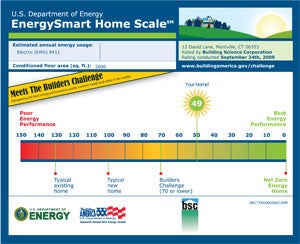
Builders Challenge Certificate
Enclosure Design
Roof Assembly: Asphalt shingles and roofing felt over a Hunter Panels 5” Cool-Vent™ vented nail base roof insulation panels (R-21.7). R-38 fiberglass batt insulation in rafter cavities below structural roof deck.
Wall Assembly: Fiber cement siding attached to 1x3 wood furring strips over 3” foil-faced polyisocyanurate insulating sheathing panels, ½” OSB sheathing and 2x6 wood framed at 24” o.c. with R-19 fiberglass batt insulation.
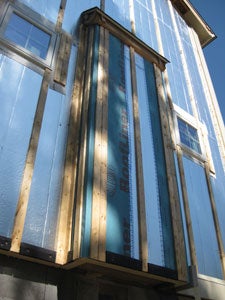
Wood furring over polyisocyanurate sheathing
Window Specifications: Harvey Industries Tribute double hung, triple pane vinyl-framed windows with spectrally selective LoE and krypton gas fill.
Air Sealing: Continuous bead of adhesive sealant beneath each exterior wall bottom plate, spray foam insulation at rim/band joist areas and roof-wall transition, spray foam insulation in framing between house and garage, low expanding foam sealant around doors, windows and enclosure penetrations.
Foundation Assembly: Hunter Panels 3.5 nail base panels (OSB facer laminated to polyisocyanurate – R-18.5) fastened to pressure treated furring strips nailed to cast concrete foundation walls.
Construction
Encouraged by the support of manufacturers, technical guidance from BSC and favorable media attention, the builder very boldly pursued high performance objectives and, in doing so, showed flexibility and attention to detail that helped the project succeed. Along with the successes, there were some aspects of the high performance design that posed challenges.
Despite the push toward advanced framing with 24” o.c. spacing, the building includes a significant amount of non-structural lumber such as headers in non-bearing walls, numerous extra studs, solid partition blocking and corners framed with more than 2 studs.
The use of thick insulating sheathing posed significant challenges in two principle areas: cladding attachment and water management.
The need for furring strips to attach cladding over the thick insulation and to back ventilate the cladding entailed extra steps for the framer. The long screws needed to attach the furring strips over the insulation represented a significant cost.
Construction personnel struggled to reconcile standard flashing practice with the sequence imposed by the addition of exterior insulation. BSC observed several water management errors during construction and either demonstrated proper detailing or prepared detail drawings to guide remediation.
Mechanical Design
Heating and Cooling: 97.5% AFUE furnace with variable speed ECM blower installed in conditioned space paired with 9.5 HSPF/ 17 SEER heat pump.
Ventilation: Central Fan-Integrated Supply (CFIS) ventilation system using the central air handler fan and ductwork for distribution.
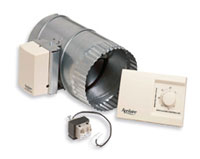
Ventilation system components
Space Conditioning Distribution: Insulated sheet metal trunks with insulated flex run-outs. Jump ducts for laundry and each bedroom. Entire distribution system within thermal enclosure.
DHW:0.82 EF on-demand propane water heater with centrally located plumbing manifold.
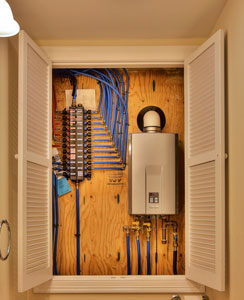
On-demand propane water heater and manifold
Lighting: 100% ENERGY STAR® CFL lighting
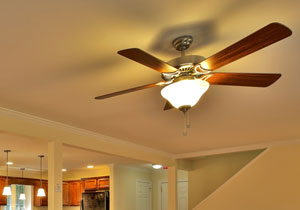
Photograph courtesy of Jim Pepitone
Appliances: ENERGY STAR® dishwasher, refrigerator and clothes washer.
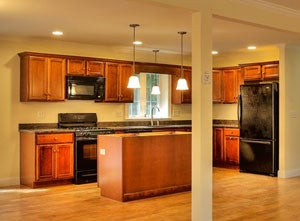
Photograph courtesy of Jim Pepitone
Testing
BSC conducted building airtightness testing (blower door testing) prior to drywall installation and again at project completion. BSC also conducted duct system air flow and leakage testing at project completion.
The pre-drywall blower door testing offered the opportunity to assess the infiltration control performance at a time when the builder would be able to address deficiencies relatively easily.
There were few deficiencies in this debut Building America project: the pre-drywall testing measured building airtightness of 1.65 ACH50. At project completion the airtightness measure had improved to 1.48 ACH50.
The total air distribution system leakage was higher than expected given the obvious attention to duct sealing by the HVAC contractor. The system leakage of the nominal two-ton system was 244 cfm at 25 Pa pressurization. Inspection of the cabinet of the high performance air-handler and furnace found inspection ports without covers and wiring sleeves without gaskets.
As would be expected with the distribution system entirely within a very airtight enclosure, system testing found no measureable leakage to the outside.
Moving Forward
Ark Ventures intends to build out the Greenbrier subdivision offering three levels of energy performance. ENERGY STAR® would be the base level of performance, Builders Challenge the middle level, and Building America the top tier performance option.
For ongoing and future projects, BSC will continue to work with Ark Ventures to identify cost effective means of attaching thick exterior insulation and furring strips in order to realize performance advantages in terms of moisture control, energy performance and cladding durability.
BSC will also identify appropriate high performance mechanical system strategies as available technology and pricing continues to evolve rapidly.
Project Highlight: Airtightness Spray foam insulation was used to maintain air flow control at typically challenging areas including: the separation between living space and the garage, behind the tub/shower enclosure, at the rim/band joist, and at the wall-to-roof transition. The level of airtighness achieved is a major factor in the homes energy performance. |

